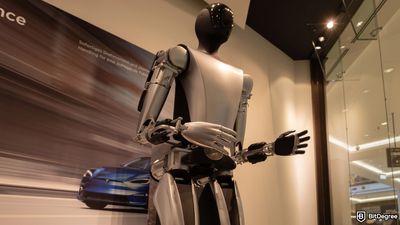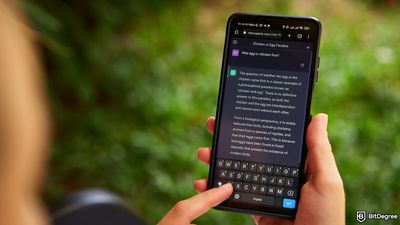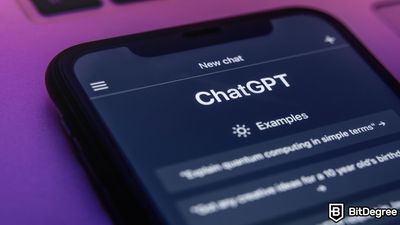Key Takeaways
- AI art involves any type of art (text, image, music, or video) created using artificial intelligence;
- AI art dates back to 1973, when AARON, the first AI-based program capable of generating abstract art, was created;
- The most popular way to make AI art is using text-to-image AI art generators, such as DALL·E 3, Midjourney, and others. Though, you can also make your own AI art generator.
Stop overpaying - start transferring money with Ogvio. Sign up, invite friends & grab Rewards now! 🎁
I bet you’ve seen TikTok filters that can turn you into anime characters, an AI chatbot that can write you a poem about cookies and whatnot, or programs like Synthesia that can create studio-quality videos with AI avatars and voiceovers. Does this mean you can now create art pieces without an actual artist? Well, to answer this, we should look into what is AI art, in the first place, and whether it’s actually art.
AI-generated art has become very popular indeed, even though it does spark discussion about ethics, copyright, and creativity. Even so, many question not only how to make AI art but also how to make money with AI art. In this article, however, I’ll mostly focus on figuring out the former.
So, without further ado, let’s delve into the world of AI-generated art and find out what it is, how it is made, and what is the AI art generator everyone is using.
Table of Contents
What is AI art?
Let’s begin by answering the main question – what is AI art exactly? AI art refers to any type of computer-generated artwork produced with the help of artificial intelligence, including images, texts, sounds, and videos.
Latest Writesonic Coupon Found:I’m sure you probably know, but artificial intelligence refers to computer systems and algorithms that are capable of doing activities, which would typically call for human intelligence. Besides, an integral part of AI is machine learning, which refers to the fact that an algorithm is capable of learning and, thus, improving with time.
Of course, artificial intelligence still requires some sort of human interference, as it’s not advanced enough to become independent (yet).
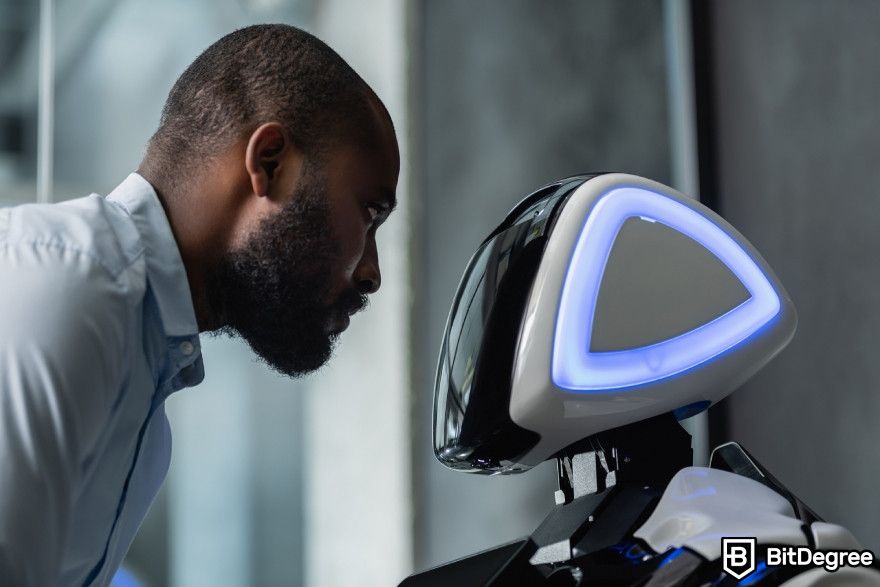
That said, let’s get back to the topic at hand – art by artificial intelligence. Even though AI-generated art comes in many forms, as mentioned above, the one that mostly comes to mind when talking about what is AI art is images.
To generate these images, people either use AI art generators or various apps and plugins. AI art can be generated through text-to-image or image-to-image models (though the former is much more popular at the moment). Besides, different types of AI networks can be used for generating AI art, each yielding different results, but ther two most common ones include:
Generative Adversarial Network (GAN)
GAN is a network that consists of a generator and a discriminator that work in tandem to produce original data[1]. The generator, as the name suggests, is the one that creates the required data (images, for example), while the discriminator quite literally discriminates that data, trying to figure out whether it’s original or a copy.
That’s why it’s called adversarial, as there’s always some sort of conflict happening between the two components of the network. However, both the generator and discriminator improve with time due to their machine learning capabilities. Such networks are most often used when creating text-to-image art.
Some popular examples of GAN-based AI art generators include OpenAI's DALL·E 3, Midjourney, and StyleGAN.
Convolutional Neural Network (CNN)
Put briefly, a convolutional neural network consists of many deep neural networks that are primarily used for visual imagery analysis[2]. Thus, such networks can also be used for style transfer, which allows creating an image by taking the style of one image and applying it to another.

So, you can take a selfie, for example, and apply a filter that will make it look like one of Salvador Dalí’s paintings. This type of network is usually used when it comes to creating image-to-image art.
Also, a lot of image editing apps you can download to your phone provide this feature. However, when it comes to searching for AI art generators that utilize a CNN, you’ll most likely stumble upon Google’s DeepDream.
To sum up, a GAN-based AI art generator will create an original image based on a database of thousands of already existing images, while a CNN-based generator will modify an image of your choice, making it resemble the style of some other image.
Now, it’s worth noting that the question, “What is AI-generated art?” has been floating around way before the current AI craze.
The Origin of AI Art
Artificial intelligence dates back to the first half of the 20th century, but it bloomed in 1950 when Alan Turing developed the Turing Test[3], which formed the basis for artificial intelligence. However, the term itself was coined in 1956 following the 2 month Dartmouth College research project on artificial intelligence by John McCarthy, Marvin Minsky, Nathaniel Rochester, and Claude Shannon.
When it comes to art by artificial intelligence, not that long after AI emerged as a new computer science field, the first AI-based program capable of generating abstract art was created. I’m talking about AARON, a program created by computer scientist Harold Cohen in 1973.
Following this, many more programs emerged. Though, the question of what is AI art became even more prominent in 2015 when Google launched DeepDream, opening up AI art to a wider user base.

As you’re already aware, Google DeepDream sends images through the CNN network. The network uses computational pareidolia to discover and highlight patterns in that image, enhancing it by applying a dreamlike psychedelic effect, hence the name.
But this was not enough, as Google DeepDream only enhances an already existing image. In 2018, programs using GAN started to emerge, allowing not only image modification, but also merging of two or more images in order to create a new one. Artbreeder was among the first such programs.
Now, an actual example of art you’ll surely see when trying to figure out what is AI-generated art is the portrait of Edmond de Belamy. It’s an image that was created in 2018 using AI, but it looks like an old painting. The piece was created by Obvious, which is an artist collective that works specifically with AI.
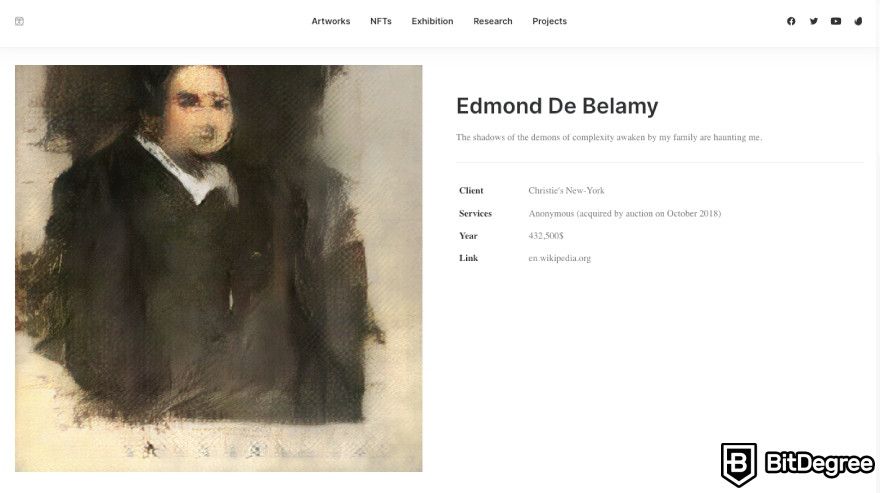
The image displays a completely fictional person developed using an algorithm that was trained on a set of 15,000 pre-twentieth century portraits from WikiArt. The fact that it was the first widely reported sale of AI artwork accounts for this piece's enormous popularity. It was sold for $432,500 as opposed to the anticipated $7,000-10,000 (that's pretty impressive!).
Following that, the next big thing in the AI art industry was the release of one of the first text-to-image AI software that allows users to turn text prompts into actual images. The software was created by Open AI and called DALL·E (combining the names of Salvador Dali and Pixar’s WALL·E 3).
This could be seen as one of the pillars of understanding what is AI art, as it marked the beginning of the widespread adoption of text-to-image AI art generators. That said, let’s talk about how to make AI art.
How to Make AI Art?
If figuring out what is AI art sparked your interest, you probably want to know how to make AI-generated art. I’ve already briefly mentioned the main ways to do that, but let me reiterate.
AI art can be made by generating visuals that mimic other images, creating original graphics from text descriptions, or even creating images entirely from code. It can also be made simply using an image editing app on your phone that features a CNN-based AI filter.
However, the main buzz on the market is AI art generators. Thus, many are wondering, “What is the AI art generator everyone is using?”. Well, let’s see.
AI Art Generators
Since AI art encompasses a scope of formats, including images, videos, music, and so on, each format has its own generators. There are even AI generative add-ons that provide generative fill on your photos (like Adobe Firefly on Photoshop).
However, I’m going to focus on image generators that turn text into images, as they are the talk of the town when it comes to understanding what is AI-generated art.
DALL·E 3
DALL·E 3 will definitely come up when looking for what is the AI art generator everyone is using. It’s an improved version of DALL·E (and, of course, DALL·E 2), one of the first text-to-image AI software I’ve mentioned in the “What is AI art?” chapter.
It works the same way as its previous versions – generating images based on the text you input – apart from the fact that it employs more advanced technologies and yields better results.
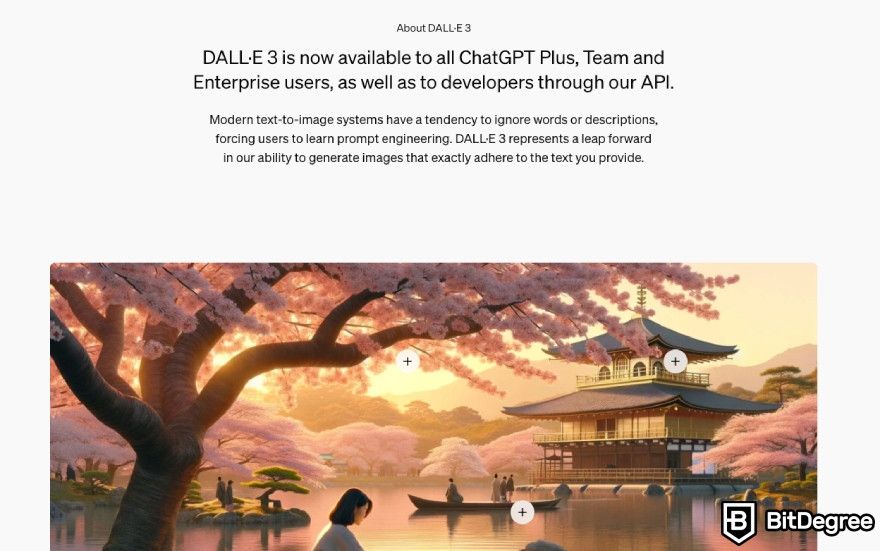
One of the differentiating features of images created using DALL·E 3 compared to some other AI art generators is that they are photorealistic. Besides, you can edit these images, as in add or delete elements by simply selecting the fields that don't meet your needs.
By the way, you can only access it via ChatGPT 4.
Midjourney
Midjourney is similar to DALL·E, except that you can only use it through a Discord bot on their official Discord server. Bit of a hassle, but it adds a cool community vibe.

Midjourney is renowned for its emphasis on generating artistic pieces, prioritizing creativity over utility. However, it lacks image editing features, focusing solely on the generation process.
Despite the added complexity of using it through Discord, though, it presents an intriguing platform for individuals interested in exploring the creative possibilities of what is AI art.
Leonardo AI
Like the two aforementioned AI art generators, Leonardo AI also allows creating images from text. However, apart from the image generator, it offers the AI Canvas feature, which allows you to edit these images.
On top of that, Leonardo AI also provides users with the 3D Texture Generator, which allows the creation of various designs on 3D models.

Despite its extensive capabilities, it remains approachable and user-friendly, making it accessible to both seasoned artists and beginners alike.
If you’re wondering whether these AI art generators are free, DALL·E and Midjourney are not, while Leonardo AI has a free tier (with a limited amount of images you can generate per day).
Of course, these are just a few of many AI art generators out there, and more will surely be developed in the near future.
How AI Art Generators Work?
Now, if you want to truly learn how to make AI art, it would be useful (or at least interesting) to understand how text-to-image AI art generators work. I’ll try to put it as briefly and non-technically as possible, don’t worry.
So, AI art generators produce new artwork by employing deep machine learning algorithms. FYI, deep learning is a branch of machine learning that mimics human brain structure, which essentially means it has a human-like ability to handle unstructured data (such as text, photos, or videos).
A large collection of images is necessary for an AI art generator to use as its training data to be able to comprehend a variety of text prompts. And by “large,” I mean one including thousands of images and their text descriptions. Of course, it can be smaller, but then it will be much more limited.
When you give the program a text prompt, it runs it across its database repeatedly, trying to find suitable matches based on which it will generate an image. For instance, if your text prompt is “create an image of a green alien with glasses”, the AI will search for examples of aliens, green images, and glasses. Then, based on these examples, it will generate its best guess of how a green alien with glasses should look.
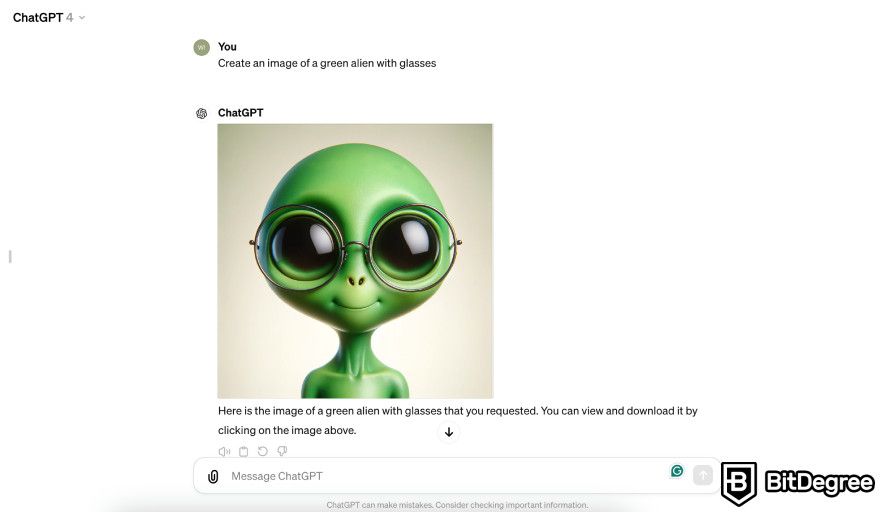
The created image, however, does not originate from the training set. Instead, it originates from the latent space of the deep learning model. What on earth is that? Technically, it’s described as an abstract multi-dimensional space that stores a meaningful internal representation of events that are witnessed externally.
Wait, what?
Let’s consider the “green alien with glasses” prompt once more. The AI will divide the text into three parts – green color, alien, and glasses – and will place each in different dimensions. Then, after evaluating each dimension, it will create a separate space for the output among these dimensions, which is exactly what is considered to be latent space.
But I think that’s enough of the technical stuff, I could write a separate article solely on the topic of how an AI art generator functions at its core, not to mention the fact that each generator might work differently.
Now, when searching for how to make AI-generated art, you might also come across an option of making your own art generator, so let's talk about that.

- Free to use
- Add-ons for Microsoft Word and Chrome
- Wide selection of tools
- Extensions for Chrome and Edge browsers
- Some tools are free
- Easy to use

- Supports over 120 voices in 20 languages
- Live customer support
- Voice cloning feature
- Voice cloning
- Emphasis and pauses
- Background music

- Easy to use
- AI-powered tools
- Cross-platform integration
- Multitrack editing
- AI-powered editing
- Accurate transcription
Creating Your Own AI Art Generator
As it’s not easy to understand how an AI art generator works, it’s definitely not easy to create one, too. In this case, knowing what is AI art is not enough. You also have to know how to program, as well as understand such processes as machine learning and image processing.
If you do, the first part of your AI art generator creation process is coming up with an idea of what kind of generator you want to create and figuring out which tools you’ll need to do that.
Then, you have to collect a large dataset of images on which you’ll train your AI program. Do note that the images in your database will have to be of the same format and size. Once you have the database, you’ll have to use a deep learning framework to go through the actual training.
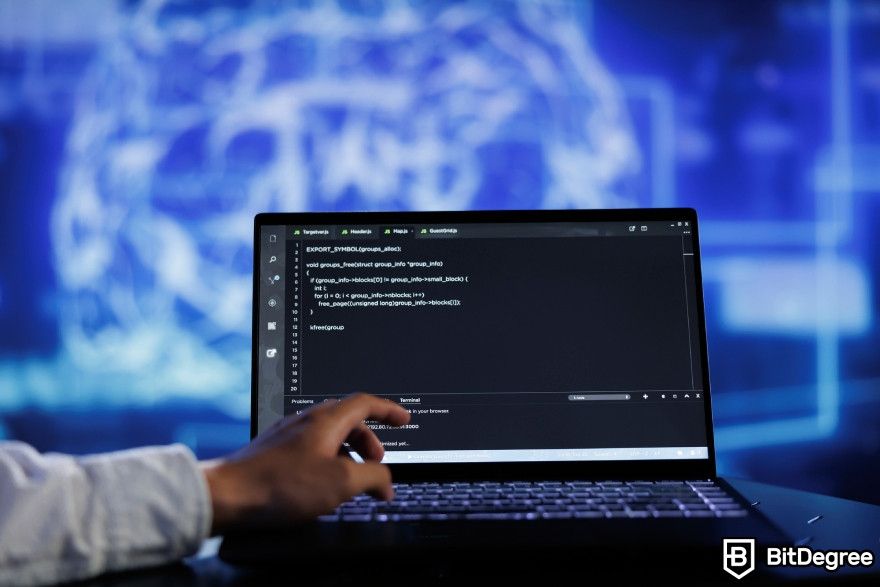
After you’ve trained your AI art generator, you can use it to generate new images. You might have to change some parameters if you want to come up with more variations.
Of course, this is a very oversimplified explanation of how to create your own AI art generator, the process itself is much more complex.
So, if you’re searching for how to make AI-generated art as a beginner, going with one of the AI art generators everyone is using is probably a better choice. After all, you’ll just have to fill in a text prompt, tweak a few parameters (like the number of images you want to generate), and that will be it.
How to Make Money with AI Art?
In the “What is AI art?” chapter, I’ve told you about the AI-generated portrait of Edmond de Belamy, which was sold for $432,500. Thus, it’s only natural that you might be wondering how to make money with AI art.
It’s important to note that there are many concerns and uncertainties when it comes to AI art and copyright, which I'll talk about in more detail further in this article. Right now, just note that before using any AI art for financial gain, you have to make sure that the program you’ve created it with allows you to do that.
Keeping that in mind, some of the popular ways of making money with AI art include:
- Stock Photos. You can create a variety of images using AI and sell them as stock photos. Stock photos are images licensed for commercial use. People usually buy and use them on their websites, articles, advertisements, and so on.
- Non-Fungible Tokens (NFTs). You can turn AI-generated art into NFTs and then sell them on NFT marketplaces. NFTs are unique digital tokens that exist on the blockchain and can be sold for cryptocurrencies or traded for other NFTs.
- Print-on-Demand. You can print art generated with AI on clothing, mugs, phone cases, etc., and then sell these products. One of the most popular ways of doing that is through print-on-demand, where you make the product only when someone places an order.
- Selling Prompts. This one is not exactly making money with AI art per se. However, you can make some money selling unique prompts so others can easily generate artwork with AI.
If you want to find out more about how to make money with AI art, check out this article that’s focused specifically on the topic at hand. Now, let’s look into the more philosophical side of what is AI art.
How Does AI Art Impact Artists?
When talking about what is AI art, it’s inevitable to talk about its effects on artists and the art world as a whole. Many might be thinking: “If AI can create art, music, texts, and whatnot more efficiently, do we really need artists, musicians, and writers?”.
This is the question of the century, especially since all of these science fiction movies about robots and AI present a scenario in which they eventually replace humans in all aspects of life and rule the planet.
Don’t worry, though, I’d say that it’s more an imaginary scenario than a possible reality, because even though AI is becoming more and more advanced, it still cannot function without human interference.

Besides, when it comes to creating art, in any form, AI cannot possibly replace an artist simply because it’s not human. You see, a big part of art is humanity itself, with all its imperfections and emotions that can be turned into creativity.
AI art, on the other hand, is computational and precise. Even though it can be created based on human art, it will still lack originality and the emotional appeal, which comes from a piece of art created by a human.
Now, AI art cannot replace artists, but it can definitely help them. For example, an artist could generate images with AI to create an idea board, which is especially useful when struggling with an artist’s block.
Moreover, an artist can use AI as one of the tools for creating art. Of course, in this case, I’m not talking about simply putting a text prompt, generating an image from it, and deeming it a masterpiece. I’m talking about various AI tools that can aid you when creating your own art, such as auto-filling certain parts of you’re image, and so on.
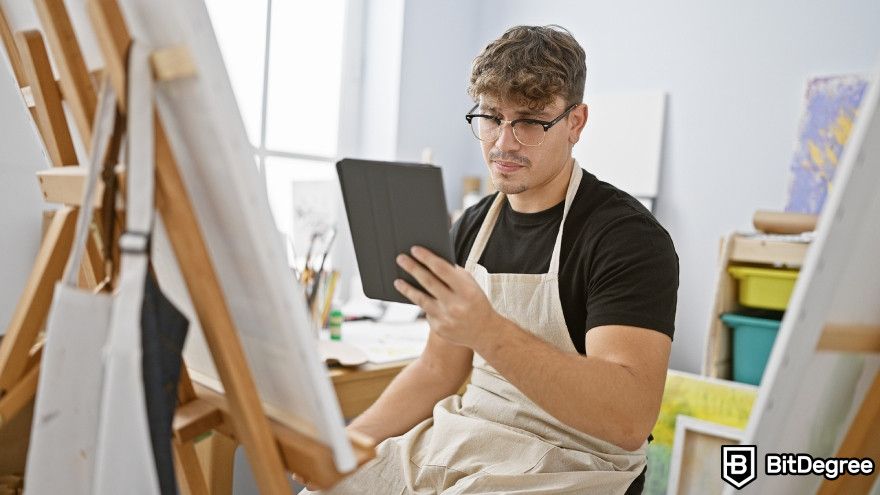
Besides that, AI can be used to analyze your work and provide you with a report on what it sees, the color palette, etc. It would give you unbiased computational feedback on your work. Such feedback would be way different from what another person could tell you, but it might give you some useful insights.
Lastly, an artist can use AI art generators to create big collections of art faster based specifically on their work. They can do that by creating several pieces by hand and then training the generator on a database of these pieces. This would be pretty useful when creating an NFT collection, for example.
As for considering the whole art industry, it's difficult to say how AI-generated art will affect it because it's still a relatively new concept that hasn't had a significant impact yet. So, we must wait and see what the future brings.
AI Art and Copyright
Those who question what is AI art will surely stumble upon the controversy of it when it comes to copyright, originality, and creativity[4]. You see, it’s hard to determine to whom (or what) AI art should belong, and whether it’s actually original.
As you already know, AI art generators create art pieces based on the features, styles, and patterns from the dataset of images they were trained on. Nonetheless, the work created with AI is original as it’s not an actual copy of some other work.
However, it’s still based on these patterns and styles from its dataset, which doesn’t make it completely unique in a way a human could create art from their own imagination. But then again, we as humans also take inspiration from others.
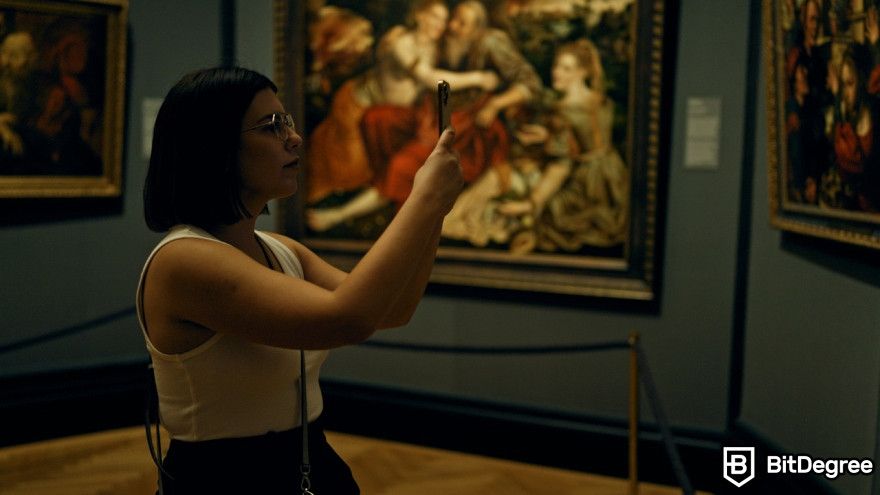
Due to this never-ending debate of AI art originality, who owns the copyright for AI-generated art is a complex legal subject. Some argue that the copyright should belong to the creator of the AI program, while others argue that the copyright should belong to the AI itself.
To bring more regulation into the world of AI art, the US Copyright Office issued a new artificial intelligence initiative in March 2023. It essentially states that when a human can demonstrate they personally invested a significant amount of creative effort in the final product, AI-generated work will be subject to copyright protection.
However, this doesn’t solve the problem because then the question is, “How much does a person have to contribute to that piece of AI-generated work?” and this is where the heated debate begins.
In August 2023, US District Court Judge Beryl A. Howell stated that AI-generated artwork cannot be granted copyright protection. This decision followed a lawsuit brought against the US Copyright Office by Stephen Thaler, who sought copyright for an AI-generated image produced using his Creativity Machine algorithm.
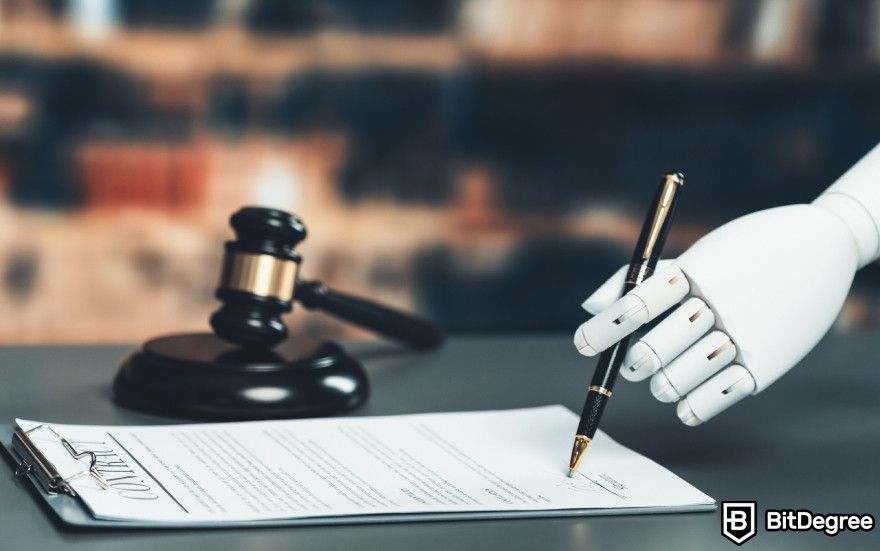
Thaler had repeatedly attempted to secure copyright for the image, proposing it as a "work-for-hire" with himself listed as the owner. However, his requests were consistently denied by the Copyright Office. In response, he filed a lawsuit, arguing that the Office's denial was in contravention of the law.
Judge Howell's ruling underscored the fundamental requirement of human authorship for copyright eligibility. She emphasized that copyright historically has been reserved for works significantly influenced by human creativity, citing precedents such as the famous "monkey selfie" case.
While acknowledging the evolving intersection of AI and copyright, Judge Howell raised questions about the level of human involvement necessary to copyright AI-generated art, particularly considering that AI models are often trained on existing works.
As you can see, we might be a long way from figuring out legal complexities emerging in the realm of AI and copyright.

Did you know?
Have you ever wondered which online learning platforms are the best for your career?
Conclusions
So, what is AI art? It’s any form of art created with the assistance of artificial intelligence, including images, music, video, and written text. Even content pieces created with Writesonic or videos created with Pictory can be considered AI art. For those who wonder how to make AI art, the most popular way is using an AI art generator.
There are various types of AI art generators, such as image-to-image, text-to-image, those based on a CNN, and so on. Whichever you choose depends on your desired outcome. Though, text-to-image generators are in the spotlight these days.
However, if you plan to make your own AI-generated art, don’t forget to consider the questions about copyright and originality. While it won’t really matter if you’re just playing around, it will matter if you plan to use the AI art you’ve created for financial gain.
The content published on this website is not aimed to give any kind of financial, investment, trading, or any other form of advice. BitDegree.org does not endorse or suggest you to buy or use any kind of AI tool. Before making financial investment decisions, do consult your financial advisor.
Scientific References
1. A. Creswell, T. White, V. Dumoulin, et al.: 'Generative Adversarial Networks: An Overview';
2. K. O'Shea, R. Nash: 'An Introduction to Convolutional Neural Networks';
3. A. M. Turing: 'Computing Machinery and Intelligence';
4. H.H. Jiang, L. Brown, J. Cheng, et al.: 'AI Art and its Impact on Artists'.

.jpg?tr=w-400)
